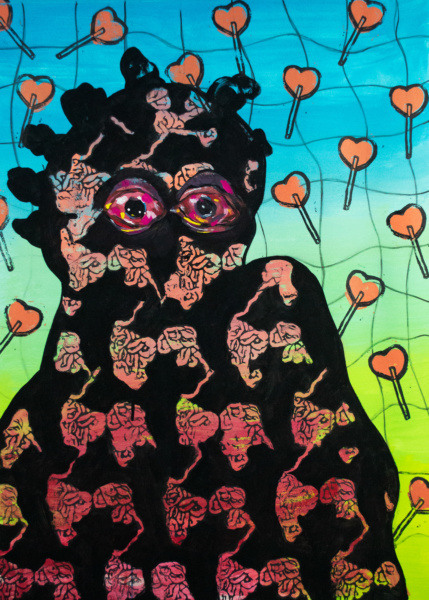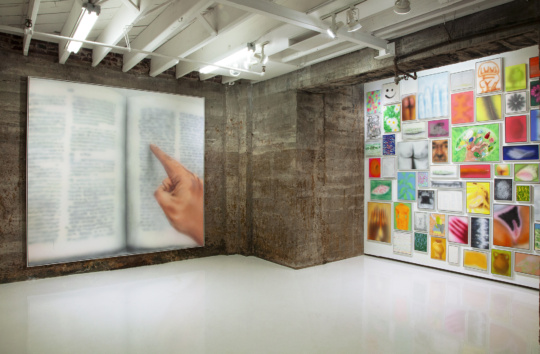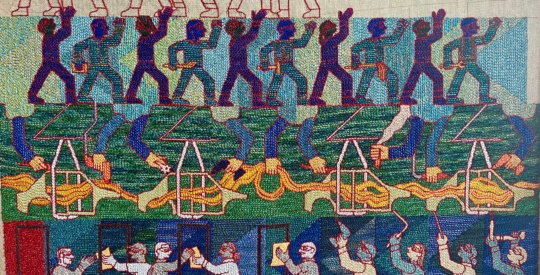Less thinking, more making.

It’s easy to be overlooked when you don’t have a seat at the table, but thankfully I always bring my own chair. As a disabled Black woman, I have a desire for people to accept or appreciate me for both my surface and what’s below it; to humanize me because of my appearance, not despite it. It’s easier to feel a human connection to someone when you remember everyone has guts and bleeds just like you. I’ve found that the “Art World” tends to appreciate an “acceptable” or palatable disability, one that’s different enough to be “exotic” but relatable enough to not scare people away. People are afraid of what they don’t understand. The Black female experience of disability isn’t one that gets great—if any—representation, and if you’ve never seen it authentically represented, you can’t understand it.

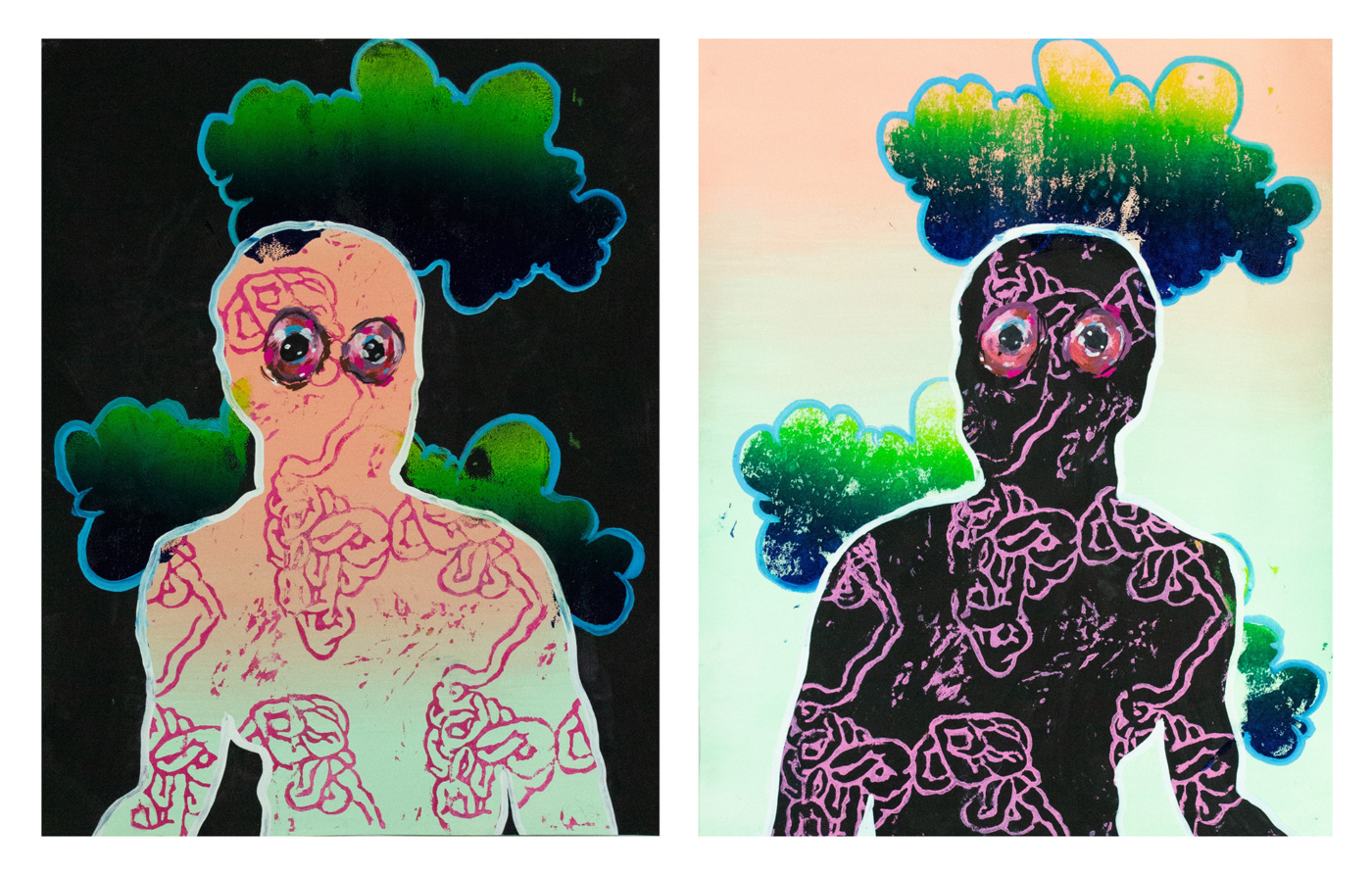
Reclaiming the female body, the Black body, the disabled body is an act of defiance. When you are part of these marginalized communities, you are taught by the dominant society that you’re deviant and that deviance is something to be feared. In the society we live in, a marginalized person having autonomy over their own body is a radical idea, but for me it’s true freedom. In feminist theory there’s a lot of comparison between the treatment of marginalized people, animals, and nature, so I think the forest and the natural world are an essential place to allegorize oppression, desire, and fear. Nature is a concrete reality, not a constructed one. It’s a place of unknowns, anomalies, and beauty, but it’s also a place that has been defeated, conquered, and colonized. The forest is a supreme teacher in many cultures. I’ve drawn a lot of inspiration from these ideas in my work, but I’m also inspired by pop culture and art history. For instance, my painting BabyDoll was inspired by Johannes Vermeer’s The Girl with the Pearl Earring, and my painting Painting the Roses Red is amassed from many different references from Disney’s Alice in Wonderland, David Lynch, and the Mona Lisa.
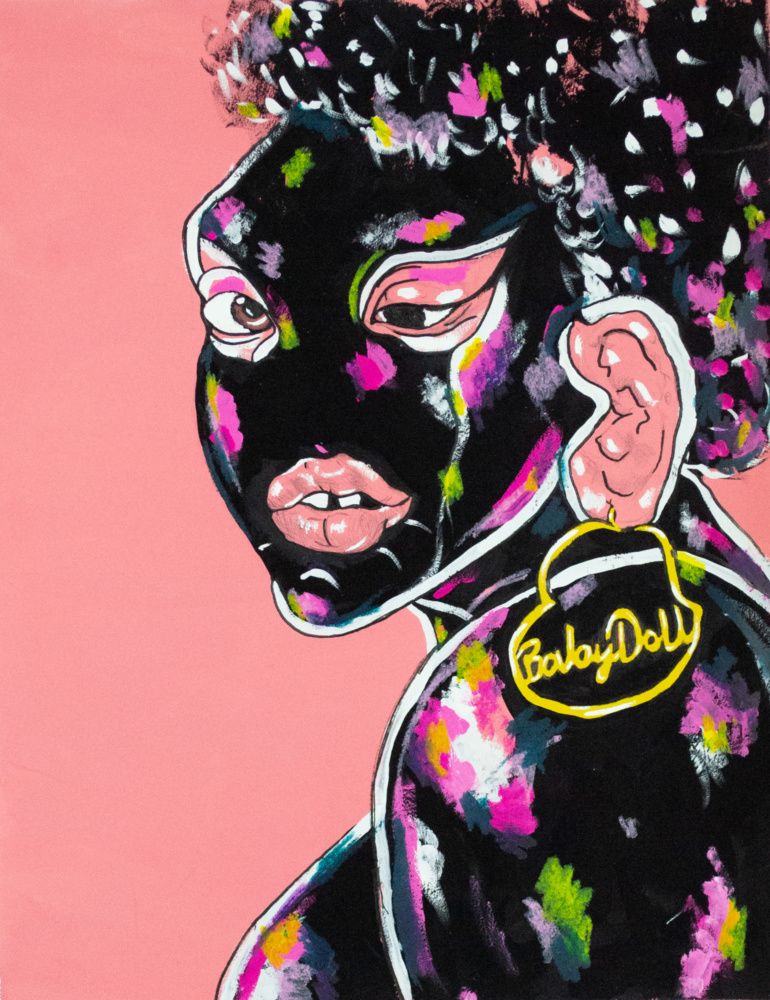
I was making sculptures before COVID, and now I’m back to painting—in a way, it feels like coming back home. I’ve found in my painting practice that I need to get my ideas out quickly before moving on. Painting and printmaking have given me an avenue to do that. I primarily use gouache, which dries quickly, and relief cuts to build up a vocabulary of symbols and patterns. Less thinking, more making. For the figures, I start with simple silhouettes and then decide which areas of the body I want to reveal, usually choosing only a few things such as teeth, eyes, or guts. Then I conceal, through paint, everything else. It’s a back-and-forth process of revealing and concealing. Since I’ve experienced so many surgeries throughout my life, I’m interested in the inner workings of the body. I have a tendency to showcase the mouth, eyes, and ears—the orifices of the body that help or hurt connection and communication, our devices for provoking empathy. I create a hierarchy within the body of what I deem important, and it varies piece to piece. In my work, I subvert the gaze of others, where oftentimes the Black female experience of disability doesn’t allow for that in daily life.
